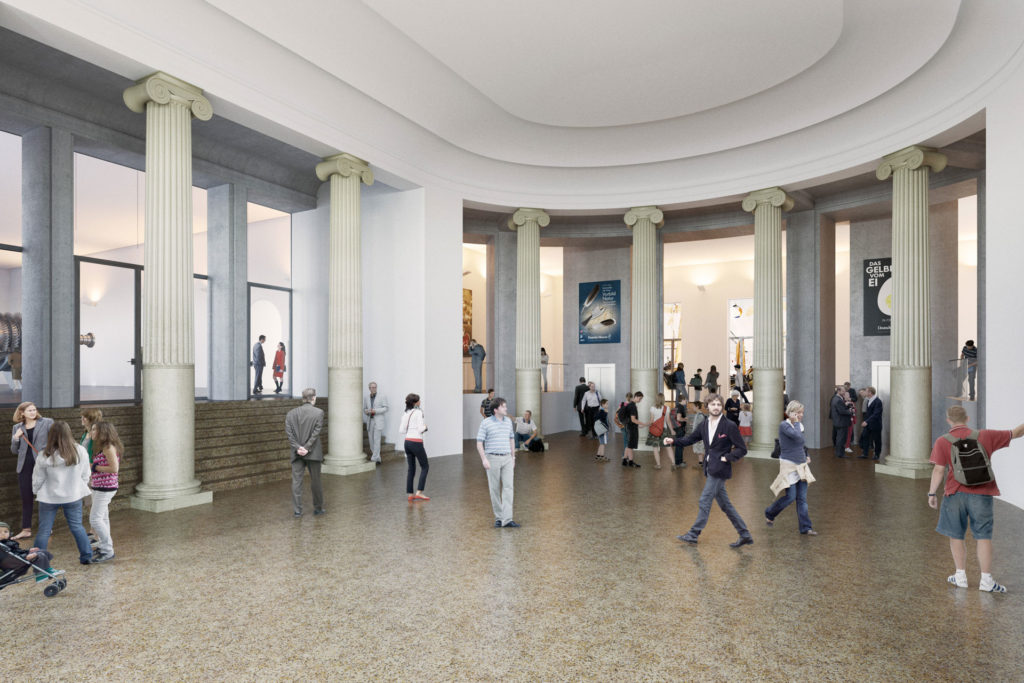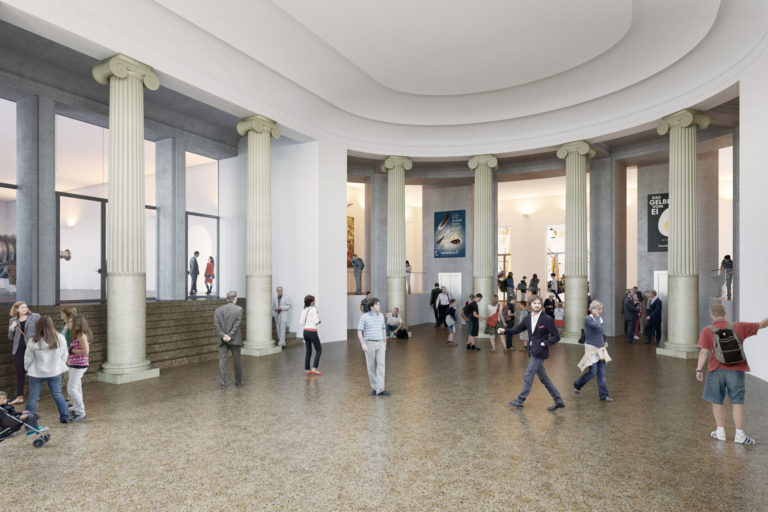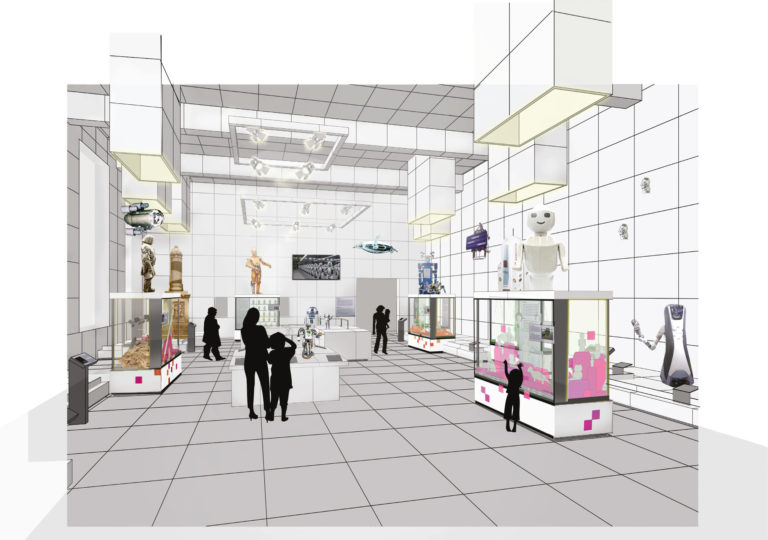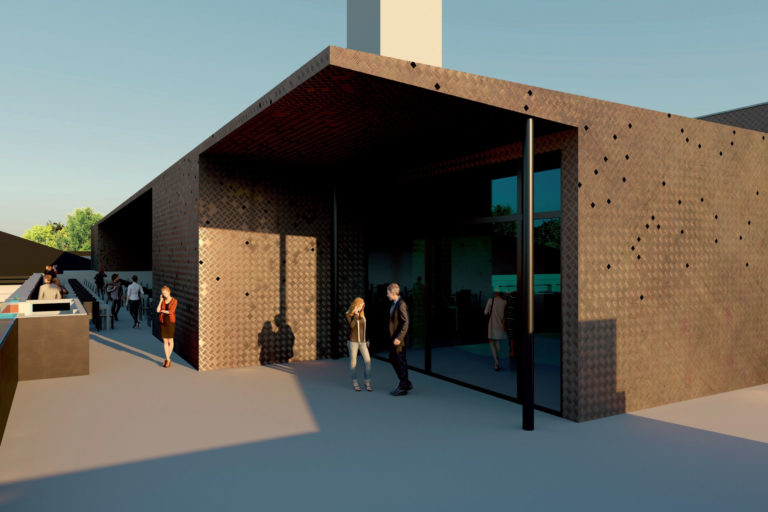Museum of the future

The future lobby of the museum will look like this. Copyright Deutsches Museum
Deutsches Museum Renovation, by Paul Sullivan
Munich’s Deutsches Museum has long been one of Germany’s most distinctive cultural institutions. Founded in 1903, it showcases a mind-bogglingly huge collection of scientific and technological innovations, from the earliest computers and the very first diesel engine to microscopes and gigantic ships, all of which attract some 1.5 million visitors each year.
Since 2015, the museum has been undergoing one of the most ambitious cultural renovation projects in Europe. Much of the infrastructure of the building — floors, walls, ventilation systems, flood protection, escape routes, signage — is being updated, and many exhibitions will be completely redesigned, many with new cutting-edge technology.
Due to the sheer scale and complexiy of the task, and to avoid the museum having to close, the makeover has been split into two stages, with the first stage completed and reopened by the end of 2021, so that the rest can be tackled. Such have been the challenges of the renovations, that costs for the project have spiraled from 445 million euros to around 745 million euros, and plans to finish in 2025 (to neatly mark the building’s official centenary) have been moved to 2028.
Among the planned major changes are a new main entrance via the Corneliusbrücke bridge, a new “Forum of the Future” — a place to discuss science, technology and progress — and a completely new museum restaurant, the “Frau im Mond”, which comes with great views of the River Isar and mountains. The Deutsches Museum in Bonn is currently being further developed into a place to experience artificial intelligence, and the Deutsches Museum in Nuremberg is also scheduled to open this year, as a “future museum” that shows how science fiction becomes reality.
The main building on the Museum Island in Munich is also well known for its playful interactions, such as the famous high-voltage Faraday Cage. New variations on that theme will include a model of the Simplon Tunnel, a masterpiece of engineering from 1906, and a Foucault pendulum featuring a 30 kilogram steel ball suspended from a 60-metre long rope.
At the time of writing, although a total of 10,000 exhibits have been removed from the building, there are still thirty exhibitions on display, spanning themes like astronomy and oceanography to mining, musical instruments and pharmaceuticals. It’s also very much worth visiting the museum’s alternative locations, such as the Flugwerft Schleissheim aviation museum, for example, or the Verkehrszentrum transport museum, which hosts 275 historical cars, trains and bicycles.
Photos: Deutsches Museum



